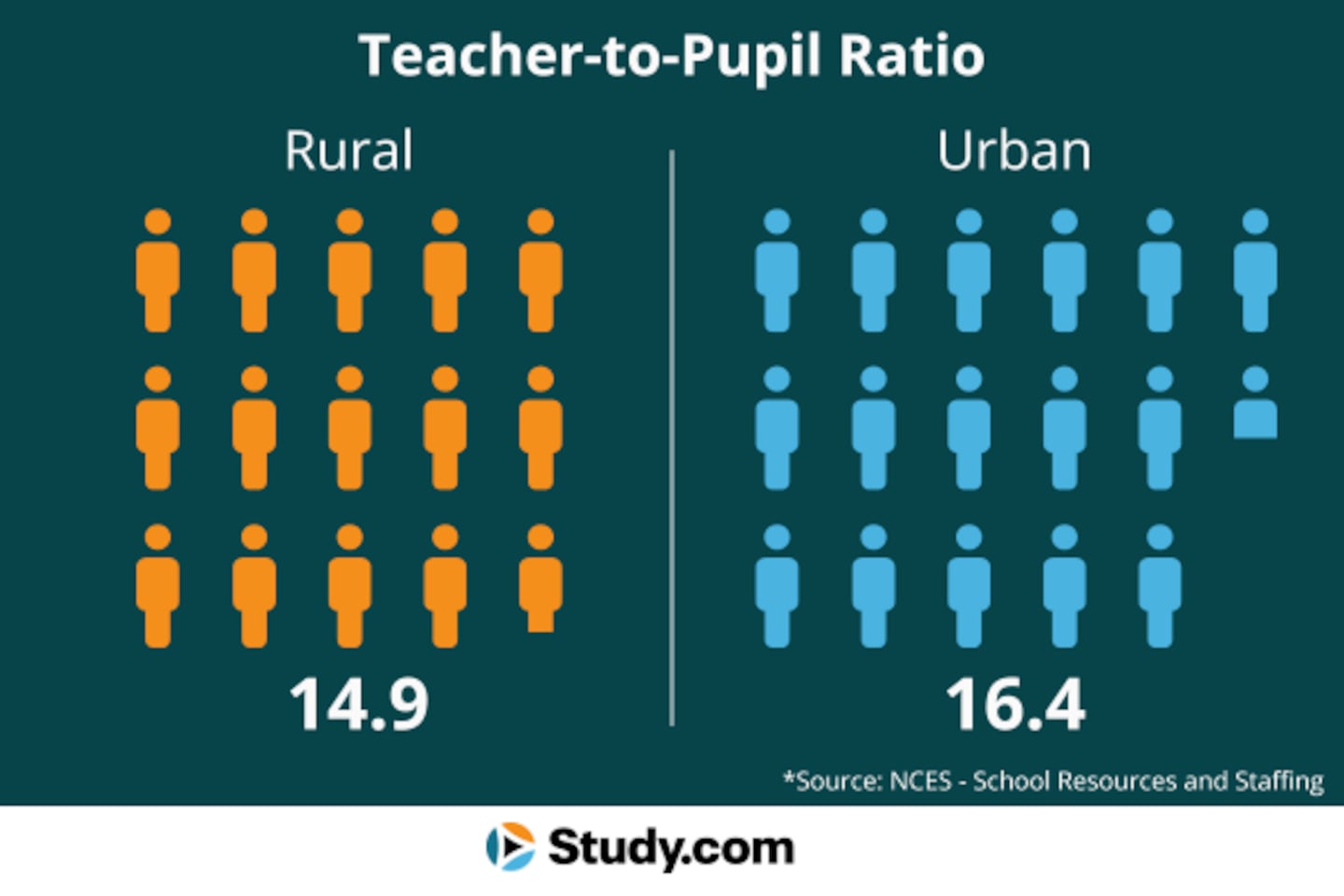The United States is in the midst of a teacher shortage that has impacted school districts across the nation. In fact, 86% of U.S. K-12 public schools reported challenges hiring teachers and staff for the 2023-24 school year, with shortages especially affecting subjects like Special Education, Mathematics, and English/Language Arts.
While staffing and retention challenges are widespread, they are often particularly associated with rural districts. This can cast a negative connotation on rural education and perhaps even suggest that teaching in rural districts is undesirable. Though rural schools have their unique set of challenges, there are also many perks to teaching in these areas. In this article, Study.com explores these benefits and the lasting impact that rural educators can make.
The Benefits of Teaching in Rural Schools
While it's true rural schools sometimes face challenges like limited access to technology and infrastructure-related issues, teaching in rural areas also has many benefits.
Better affordability
Study.com's Teacher Retention and Support survey, conducted in October of 2024, revealed that 65% of teachers in rural areas were able to afford to live in the neighborhood or close to the school where they teach, compared to only 49% of teachers in urban areas. What's more, an analysis done by the University of Minnesota Rural Health Research Center uncovered that urban households were more likely to be considered "housing cost burdened," meaning they spend more than 30% of their income on housing, mortgage, or rent costs alone. Though data varies by state and region, when it comes to teacher pay and cost of living, rural areas offer the perk of generally more affordable compared to urban settings.
Potential for salary improvement
Though it's true that educators in rural districts often earn less than their urban counterparts, many states are investing in their rural communities by putting forth legislation to try and improve the salary of first-time teachers. For example, in 2024, Arkansas passed the LEARNS Act, which created more funding for starting teacher salaries in rural districts. Iowa passed a similar bill that also increases starting salaries for educators and plans to further increase teacher's starting salaries in the fall of 2025. According to FutureEd, there are over 60 bills across 26 states that are aimed at improving the overall salary of teachers across the U.S. Salary is a real concern for rural educators, with 96% saying that improved salary would make them reconsider leaving teaching, but the widespread state initiatives to improve teacher pay could soon lessen the impact of this concern.
Study.com
Smaller class sizes
Another benefit of teaching in rural areas is smaller class sizes, which allow educators to fully engage with their students, develop personalized learning plans, and often helps improve learning outcomes in the long run. In fact, the average teacher-to-pupil ratio at rural schools is 14.89, markedly smaller than the urban ratio of 16.4.
With smaller class sizes, teachers can get to know students, understand their specific challenges and strengths, and tailor learning strategies to better meet their needs. This can help students feel more successful, have a positive impact on their learning outcomes, and ensures teachers are truly making a difference in the lives of their students. Smaller class sizes can often also feel more manageable, further reducing teacher stress, and enabling the focus to solely be on students.
Four-day work week
Recently, several rural school districts have begun to implement a four-day week. While the four-day school week was originally introduced in rural areas as a means to cut costs during times of recession, they are now being adopted all across the U.S., but particularly in rural areas, as a way of bettering teacher retention.
For example, in Colorado, about 60% of school districts now have a four-day schedule, a majority of which are in rural areas, and an increasing number of schools in Idaho are reducing the length of the school week as well. Typically, these four-day weeks will include longer instruction time on the school days, while extracurricular activities like band practice or tutoring occur on non-school days.
There are many benefits to a shortened work week. It gives teachers the chance to decompress and enjoy more leisure time. They might also have extra time to devote to professional development and career advancement opportunities, like prepping for certification exams or taking online classes. A four-day work week can also have a positive impact on physical and mental health as, unsurprisingly, research shows that teachers working a four-day week felt less burnt out and were sick less often.
Less stress
While teaching is a stressful profession no matter the district, schools have been proactive about ensuring they provide teachers with support and recourse to manage stress. According to Study.com's survey, when asked how satisfied they were with the mental and emotional health support provided to them by your school. 59% of rural teachers were satisfied, compared to 54% of urban teachers.
Some of the reasons teachers are likely to be more stress-free working in a rural school are the benefits already mentioned: smaller class sizes and better relationships with students.
Strong community ties
Another great reason to work in a rural setting is acting as a point of connection between students and the larger community. In rural areas, schools are not only education centers but community hubs, gathering places, and public spaces. Research has shown that teachers who stay in rural schools do so because they feel they are a meaningful part of their communities and have a great sense of pride in the way their school functions. If you're looking for a teaching opportunity that allows you to grow beyond the classroom and build strong ties with your community, then a rural school may be the answer.
This story was produced by Study.com and reviewed and distributed by Stacker.







